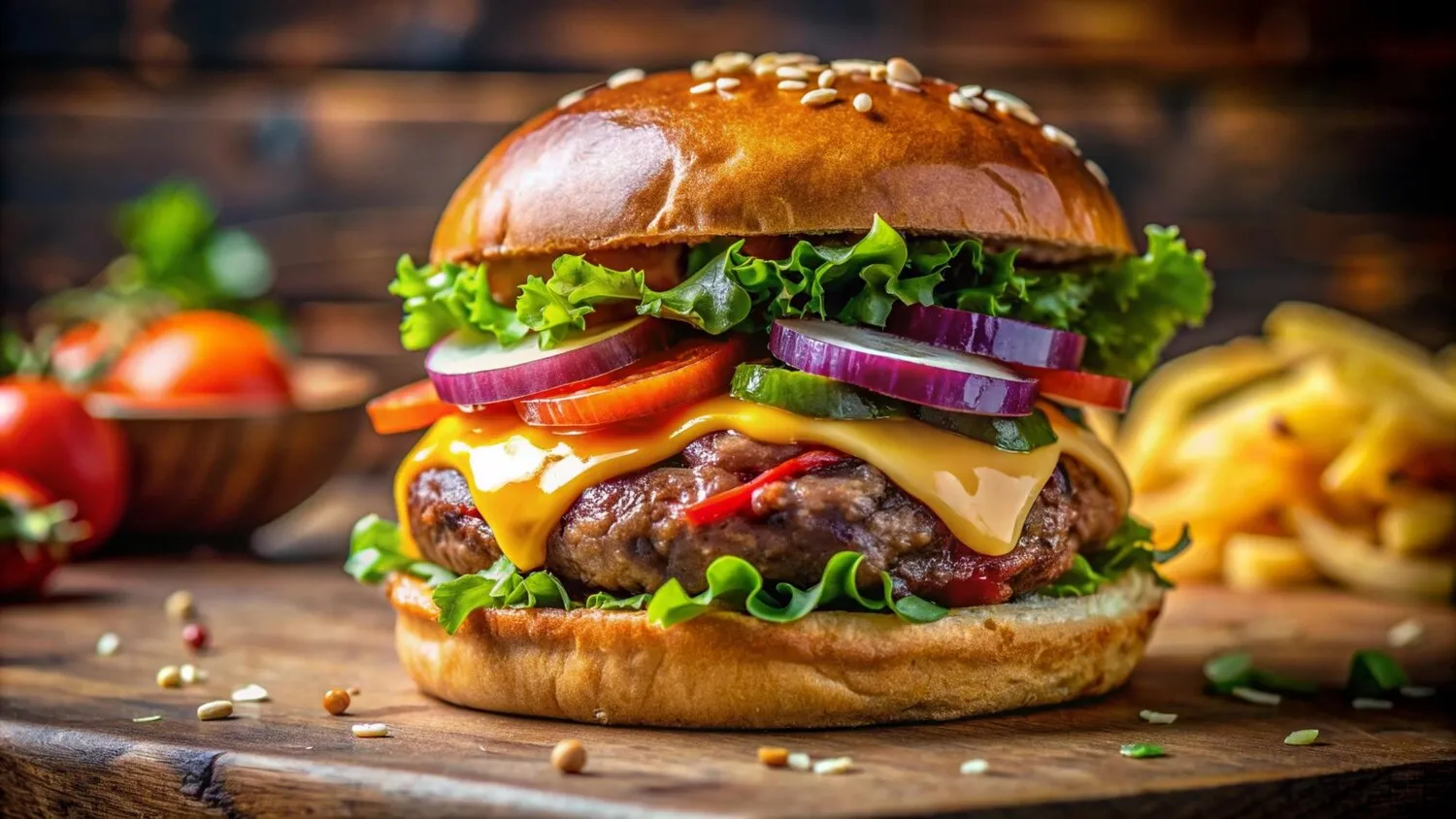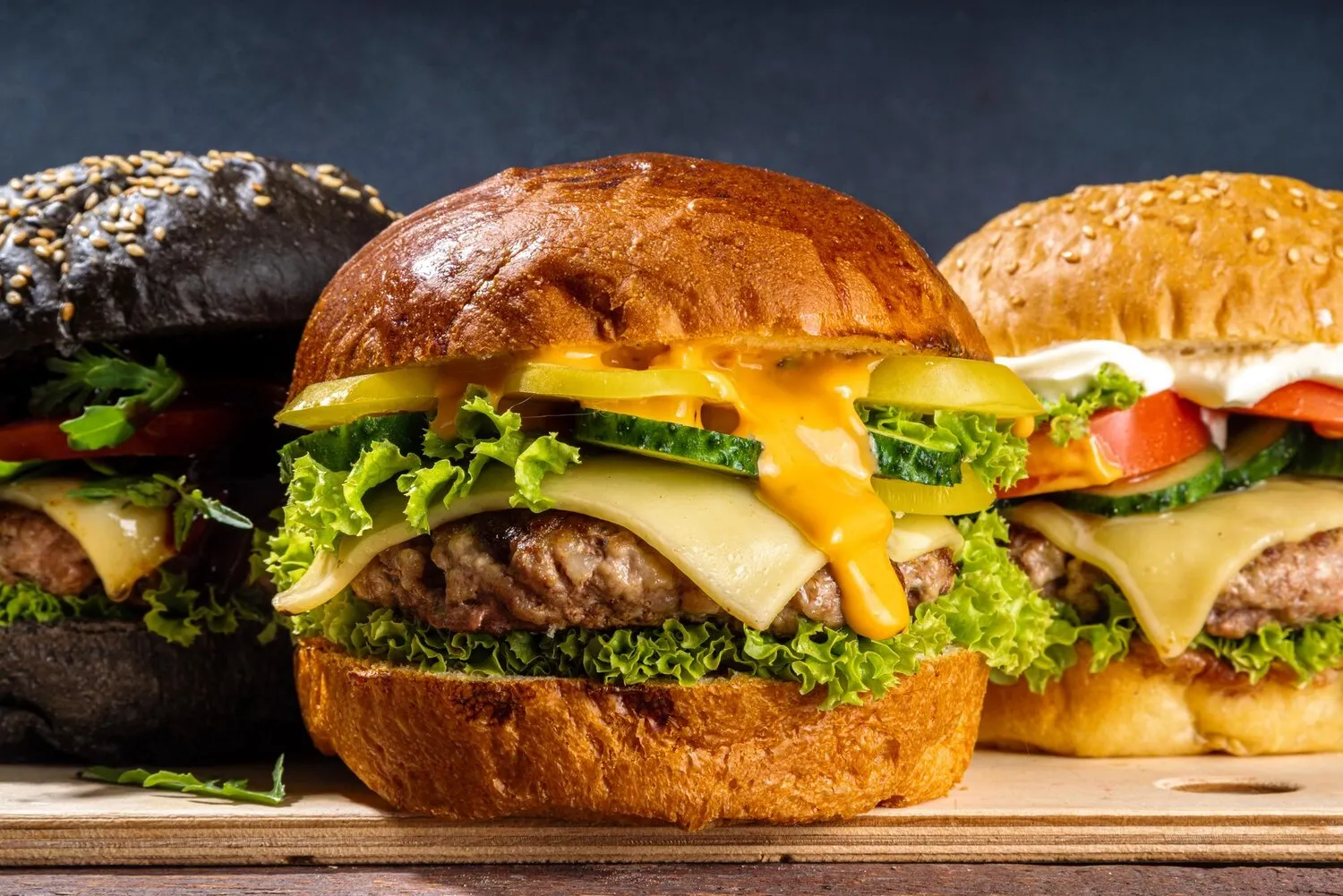
Burger
Les Copains d'abord is known for their burger, however the style is not mentioned on reviews.
Nutrition Facts
* The % Daily Value (DV) tells you how much a nutrient in a serving of food contributes to a daily diet. 2,000 calories a day is used for general nutrition advice.
The modern burger's origins are debated, but it likely evolved from German Hamburg-style steak brought to the US by immigrants in the late 19th century. These steaks were initially served without buns, but the addition of bread or buns transformed them into the familiar burger we know today.
The burger is an iconic American food, deeply intertwined with American culture and identity. It represents casual dining, fast food, and backyard barbecues. It is a symbol of American ingenuity and the accessibility of food.
American Icon
The burger is a quintessential American food, readily available and deeply ingrained in the nation's culinary landscape.
Fast Food Culture
Burgers are a cornerstone of the fast-food industry, offering a quick and convenient meal option.
Backyard Barbecues
Burgers are a staple at backyard barbecues and summer gatherings, symbolizing casual and communal eating.
Regional Variations
Different regions across the US have their own unique burger styles and toppings, showcasing regional culinary diversity.
A burger typically offers a savory and umami-rich flavor profile, balanced by fresh and tangy toppings. The richness of the meat is often complemented by acidic or spicy condiments.
The core flavor comes from the ground meat (usually beef), which provides a rich, umami, and savory base. Toppings such as cheese (cheddar, American, Swiss, etc.) add creamy and salty notes. Lettuce and tomato contribute freshness and acidity. Onions (raw, grilled, or caramelized) provide pungency and sweetness. Pickles offer a tangy, sour, and crunchy element. Condiments like ketchup and mustard add sweetness and tang, while mayonnaise contributes richness and creaminess. Bacon, a popular addition, introduces smoky and salty flavors.
Meat Selection
Use a blend of ground beef with a good fat content (around 80/20) for optimal flavor and juiciness. Consider using a mix of chuck, sirloin, and brisket for a more complex flavor profile.
Proper Seasoning
Season the ground beef simply with salt and pepper. Over-seasoning can mask the natural flavor of the meat. Season just before grilling or cooking.
Don't Overwork the Meat
Gently form the patties without overworking the meat, as this can result in a tough burger.
Temperature Control
Cook the burgers to your desired level of doneness, using a meat thermometer to ensure accuracy. Medium-rare (130-135°F) is often preferred for optimal juiciness.
Toast the Buns
Toasting the buns prevents them from becoming soggy and adds a pleasant textural contrast.
Explore additional Burgers dishes and restaurants
Explore BurgersDiscover top dining spots and culinary experiences in Metz.
Explore MetzLearn more about the food culture, restaurant scene, and culinary heritage of France.
Explore France
